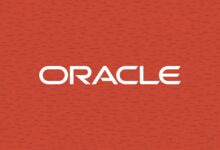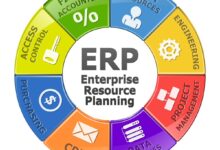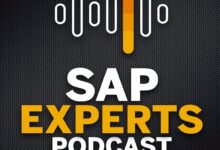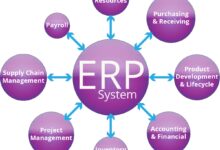Enterprise ERP Software Comparison: 7 Ultimate Power Solutions
Choosing the right ERP system can transform your business operations. In this comprehensive enterprise erp software comparison, we break down the top platforms, features, pricing, and real-world performance to help you make a data-driven decision.
Understanding Enterprise ERP Software Comparison

An enterprise ERP software comparison is more than just listing features—it’s about aligning technology with business strategy. Enterprise Resource Planning (ERP) systems integrate core business functions like finance, HR, supply chain, manufacturing, and sales into a unified platform. For large organizations, selecting the right ERP is critical for scalability, compliance, and operational efficiency.
What Is Enterprise ERP?
Enterprise ERP refers to robust, scalable software solutions designed for large organizations with complex processes, multiple departments, and often global operations. Unlike small business ERP systems, enterprise-grade platforms offer advanced customization, deep integration capabilities, and high-level security and compliance features.
- Supports thousands of users across multiple locations
- Handles high transaction volumes in real time
- Offers modular architecture for department-specific needs
These systems are typically deployed on-premise, in the cloud, or via hybrid models, depending on organizational requirements. According to Gartner, over 70% of large enterprises now prefer cloud-based ERP deployments due to faster implementation and lower TCO.
Why Conduct an Enterprise ERP Software Comparison?
With ERP implementations often costing millions and lasting several years, a thorough enterprise erp software comparison minimizes risk and maximizes ROI. Decision-makers must evaluate not only current needs but also future scalability, integration with existing systems, and vendor reliability.
“An ERP system is not just software—it’s a strategic asset that can redefine how a company operates.” — McKinsey & Company
Factors such as total cost of ownership (TCO), user adoption rates, and vendor support play a crucial role in long-term success. A structured comparison helps identify which platform aligns best with organizational goals, industry regulations, and digital transformation roadmaps.
Top 7 Enterprise ERP Systems in 2024
In this enterprise erp software comparison, we analyze the seven most dominant platforms in the market: SAP S/4HANA, Oracle ERP Cloud, Microsoft Dynamics 365, Infor CloudSuite, Workday Financial Management, IFS Applications, and Epicor ERP. Each offers unique strengths depending on industry, deployment model, and functional depth.
SAP S/4HANA: The Market Leader
SAP S/4HANA remains the gold standard in enterprise ERP, especially for manufacturing, logistics, and process industries. Built on the in-memory SAP HANA database, it enables real-time analytics, predictive planning, and AI-driven automation.
- Strong global footprint with support for 40+ languages and 250+ currencies
- Deep integration with SAP’s ecosystem (SuccessFactors, Ariba, Concur)
- Advanced supply chain and production planning modules
However, SAP’s complexity and high implementation costs can be barriers for some organizations. According to SAP’s official site, over 14,000 customers use S/4HANA globally, including giants like Coca-Cola and BMW.
Oracle ERP Cloud: Power and Scalability
Oracle ERP Cloud is a comprehensive suite offering financials, procurement, project management, and risk compliance in a unified cloud platform. It’s particularly strong in financial reporting and regulatory compliance, making it ideal for multinational corporations.
- AI-powered financial forecasting and anomaly detection
- Automated tax compliance across 150+ countries
- Seamless integration with Oracle’s database and Fusion Middleware
Oracle’s strength lies in its data engine and security architecture. However, some users report a steeper learning curve compared to competitors. For more details, visit Oracle’s ERP page.
Microsoft Dynamics 365: Integration with Microsoft Ecosystem
Microsoft Dynamics 365 Finance and Supply Chain is gaining traction due to its seamless integration with Microsoft 365, Azure, and Power Platform. It’s particularly appealing to organizations already invested in the Microsoft ecosystem.
- Real-time collaboration via Teams and Outlook integration
- Low-code customization using Power Apps and Power Automate
- Strong analytics with Power BI embedded natively
Dynamics 365 offers faster deployment and lower upfront costs than SAP or Oracle. However, its functionality in manufacturing and logistics is still maturing. Learn more at Microsoft Dynamics 365.
enterprise erp software comparison – Enterprise erp software comparison menjadi aspek penting yang dibahas di sini.
Key Features to Compare in Enterprise ERP Software
A successful enterprise erp software comparison hinges on evaluating the right features. While core modules like finance and HR are standard, differentiators lie in advanced capabilities such as AI, real-time analytics, mobile access, and industry-specific functionality.
Core Functional Modules
All enterprise ERP systems include foundational modules that manage essential business operations. These are non-negotiable in any comparison.
- Financial Management: General ledger, accounts payable/receivable, asset management, and financial reporting
- Human Capital Management (HCM): Payroll, talent acquisition, performance management, and workforce planning
- Supply Chain Management: Inventory, procurement, order management, and logistics
- Manufacturing: Production planning, shop floor control, quality management, and bill of materials (BOM)
- Sales & CRM: Lead-to-cash processes, customer service, and sales forecasting
When conducting an enterprise erp software comparison, ensure the platform supports your industry’s specific workflows. For example, discrete manufacturing requires different tools than process manufacturing.
Advanced Capabilities: AI, Analytics, and Automation
Modern ERP systems go beyond transaction processing. They act as intelligent business platforms powered by AI and machine learning.
- AI-Driven Insights: Predictive analytics for demand forecasting, cash flow projections, and risk detection
- Process Automation: Robotic Process Automation (RPA) for repetitive tasks like invoice processing
- Natural Language Processing (NLP): Voice-enabled queries and chatbot support for users
For instance, SAP S/4HANA uses AI for predictive maintenance in manufacturing, while Oracle ERP Cloud detects financial anomalies in real time. These capabilities reduce manual effort and improve decision-making speed.
“AI is no longer a luxury in ERP—it’s a necessity for competitive advantage.” — Deloitte Insights
Deployment Models: Cloud vs. On-Premise vs. Hybrid
One of the most critical decisions in an enterprise erp software comparison is the deployment model. Each has trade-offs in cost, control, scalability, and security.
Cloud ERP: Agility and Speed
Cloud-based ERP systems are hosted and managed by the vendor, offering rapid deployment, automatic updates, and scalable infrastructure.
- Faster time-to-value (often 3–6 months vs. 12+ for on-premise)
- Lower upfront capital expenditure (CapEx)
- Automatic security patches and compliance updates
However, long-term subscription costs can exceed on-premise TCO. Data sovereignty and integration with legacy systems may also be concerns. According to IDC, cloud ERP adoption grew by 18% YoY in 2023.
On-Premise ERP: Control and Customization
On-premise ERP systems are installed and maintained within the organization’s own data centers.
- Full control over data, security, and infrastructure
- Greater customization for unique business processes
- No recurring subscription fees after initial investment
But they require significant IT resources, longer implementation times, and higher maintenance costs. Many organizations are now migrating from on-premise to cloud due to scalability demands.
Hybrid ERP: The Best of Both Worlds?
Hybrid ERP combines cloud and on-premise components, allowing organizations to keep sensitive data on-premise while leveraging cloud agility for other modules.
- Ideal for regulated industries (e.g., defense, healthcare)
- Enables phased migration to the cloud
- Complex to manage due to integration challenges
While hybrid models offer flexibility, they require robust middleware and skilled IT teams to maintain seamless data flow.
Total Cost of Ownership (TCO) in Enterprise ERP Software Comparison
Cost is a major factor in any enterprise erp software comparison. However, it’s not just about licensing fees—TCO includes implementation, training, maintenance, upgrades, and opportunity costs.
enterprise erp software comparison – Enterprise erp software comparison menjadi aspek penting yang dibahas di sini.
Upfront Costs: Licensing and Implementation
Upfront costs vary significantly between vendors and deployment models.
- SAP S/4HANA: $100,000–$1M+ depending on company size and modules
- Oracle ERP Cloud: $150,000–$2M+ with annual subscription model
- Microsoft Dynamics 365: $50,000–$500,000 with flexible per-user pricing
Implementation costs often exceed licensing fees, especially for complex customizations. Consulting firms like Accenture, Deloitte, and PwC typically charge $150–$300/hour for ERP implementation services.
Ongoing Costs: Maintenance, Upgrades, and Support
After go-live, organizations face recurring expenses that can impact long-term ROI.
- Annual maintenance fees (15–22% of license cost for on-premise)
- Cloud subscription renewals (typically billed annually or monthly)
- Cost of internal IT staff or external consultants for system management
- Training costs for new hires and system updates
Cloud ERP reduces some of these costs through automated updates, but subscription fees accumulate over time. A 5-year TCO analysis is essential in any enterprise erp software comparison.
“The cheapest ERP license can become the most expensive system due to hidden implementation and support costs.” — Gartner
Industry-Specific ERP Solutions
Not all ERP systems are created equal across industries. A one-size-fits-all approach rarely works for complex sectors like manufacturing, healthcare, or retail. An effective enterprise erp software comparison must consider industry-specific functionality.
Manufacturing: Discrete vs. Process
Manufacturers need ERP systems with deep production planning, shop floor control, and quality management capabilities.
- Discrete Manufacturing: Requires bill of materials (BOM), work order tracking, and assembly line management (e.g., automotive, electronics)
- Process Manufacturing: Needs batch tracking, recipe management, and compliance with FDA/ISO standards (e.g., pharmaceuticals, food & beverage)
SAP S/4HANA and IFS Applications excel in discrete manufacturing, while Infor CloudSuite Process is tailored for process industries.
Healthcare: Compliance and Patient Management
Healthcare organizations require ERP systems that support HIPAA compliance, patient billing, and resource scheduling.
- Integration with Electronic Health Records (EHR) systems
- Revenue cycle management and insurance claims processing
- Staff scheduling and payroll for large medical teams
Oracle ERP Cloud and Epicor ERP offer strong healthcare-specific modules, including compliance dashboards and audit trails.
Retail and Distribution: Omnichannel Integration
Retailers need ERP systems that unify online and offline sales, inventory, and customer data.
- Real-time inventory visibility across warehouses and stores
- Order management for B2B, B2C, and marketplace channels
- Pricing and promotion engines
Microsoft Dynamics 365 and Infor CloudSuite Retail provide robust omnichannel capabilities, integrating with e-commerce platforms like Shopify and Magento.
User Experience and Adoption Rates
No matter how powerful an ERP system is, its success depends on user adoption. A poor user experience (UX) can lead to low engagement, data errors, and project failure. In any enterprise erp software comparison, UX should be a top priority.
Modern UI/UX Design
Today’s ERP systems are moving away from clunky, menu-driven interfaces to intuitive, role-based dashboards.
enterprise erp software comparison – Enterprise erp software comparison menjadi aspek penting yang dibahas di sini.
- Responsive design for mobile and tablet access
- Personalized home screens with KPIs and task lists
- Voice and chatbot support for common queries
Workday and Microsoft Dynamics 365 are leaders in UX, offering clean, modern interfaces that resemble consumer apps. SAP has improved with Fiori UX, but legacy modules still feel outdated.
Training and Change Management
Even the best ERP system fails without proper training and change management.
- Role-based training programs for finance, HR, and operations teams
- Super-user programs to drive internal adoption
- Continuous learning portals with videos and simulations
According to a Deloitte study, organizations with strong change management see 3x higher ERP adoption rates.
“Technology is only 20% of an ERP project. The other 80% is people and process.” — PwC
Vendor Support and Ecosystem Strength
The strength of a vendor’s support network and partner ecosystem can make or break an ERP implementation. In an enterprise erp software comparison, evaluate not just the software, but the entire support structure.
Customer Support and SLAs
Enterprise ERP vendors offer tiered support models with varying response times and service level agreements (SLAs).
- 24/7 support for critical issues (P1 tickets)
- Dedicated account managers for enterprise clients
- Online knowledge bases and community forums
SAP and Oracle offer global support centers, while Microsoft leverages its vast partner network for localized assistance.
Partner Ecosystem and Integration Capabilities
A strong ecosystem of third-party developers, consultants, and ISVs (Independent Software Vendors) enhances ERP functionality.
- Pre-built connectors for CRM, e-commerce, and HR systems
- App marketplaces (e.g., Microsoft AppSource, SAP App Center)
- Custom integration via APIs and middleware (e.g., MuleSoft, Dell Boomi)
Microsoft Dynamics 365 leads in ecosystem breadth, with over 10,000 apps available on AppSource. SAP and Oracle also have robust marketplaces but with more enterprise-focused solutions.
Future Trends Shaping Enterprise ERP
The ERP landscape is evolving rapidly. In any enterprise erp software comparison, it’s crucial to consider future-proofing and innovation trajectories.
AI and Machine Learning Integration
AI is transforming ERP from a transactional system to a predictive and prescriptive platform.
- Automated invoice matching and fraud detection
- Intelligent supply chain optimization
- Chatbots for employee self-service (e.g., leave requests, IT tickets)
Vendors are embedding AI into core modules. For example, Oracle’s Adaptive Intelligence Engine powers financial forecasting, while SAP’s AI tools assist in demand planning.
Blockchain for Supply Chain Transparency
Blockchain is being integrated into ERP systems to enhance traceability and trust in supply chains.
- Immutable records of product origin and movement
- Smart contracts for automated payments upon delivery
- Compliance with sustainability and ethical sourcing standards
IBM and SAP have piloted blockchain-enabled ERP solutions for food safety and pharmaceutical tracking.
enterprise erp software comparison – Enterprise erp software comparison menjadi aspek penting yang dibahas di sini.
Sustainability and ESG Reporting
Environmental, Social, and Governance (ESG) reporting is becoming a core ERP function.
- Carbon footprint tracking across operations
- Automated ESG data collection and reporting
- Integration with sustainability management platforms
Oracle and SAP now offer built-in ESG modules, helping enterprises meet regulatory requirements like CSRD (EU Corporate Sustainability Reporting Directive).
What is the best ERP for large enterprises?
The best ERP for large enterprises depends on industry, existing IT infrastructure, and strategic goals. SAP S/4HANA is ideal for global manufacturers, Oracle ERP Cloud excels in financial compliance, and Microsoft Dynamics 365 offers seamless integration with Microsoft tools. A thorough enterprise erp software comparison should evaluate these factors before selection.
How long does an ERP implementation take?
ERP implementation timelines vary: cloud-based systems can go live in 3–6 months, while complex on-premise deployments may take 12–24 months. Factors like data migration, customization, and change management influence duration.
Is cloud ERP more secure than on-premise?
Cloud ERP providers invest heavily in security, often exceeding on-premise capabilities. They offer encryption, multi-factor authentication, and compliance certifications (e.g., SOC 1/2, ISO 27001). However, data sovereignty and access control remain concerns for some organizations.
Can ERP systems integrate with AI and automation?
Yes, modern ERP systems like SAP, Oracle, and Microsoft Dynamics 365 have built-in AI and automation features for predictive analytics, robotic process automation (RPA), and intelligent workflows.
What is the average cost of an enterprise ERP system?
Costs range from $50,000 for mid-sized deployments to over $1 million for large, global implementations. Total cost includes licensing, implementation, training, and ongoing support.
Selecting the right ERP system is one of the most strategic decisions a large organization can make. This enterprise erp software comparison has highlighted the top platforms, key evaluation criteria, and future trends shaping the market. From SAP’s dominance in manufacturing to Microsoft’s agility in integration, each solution offers unique advantages. The key is aligning technology with business goals, ensuring scalability, user adoption, and long-term value. By focusing on TCO, industry fit, and innovation potential, enterprises can choose an ERP system that not only meets current needs but also drives future growth.
enterprise erp software comparison – Enterprise erp software comparison menjadi aspek penting yang dibahas di sini.
Further Reading:



